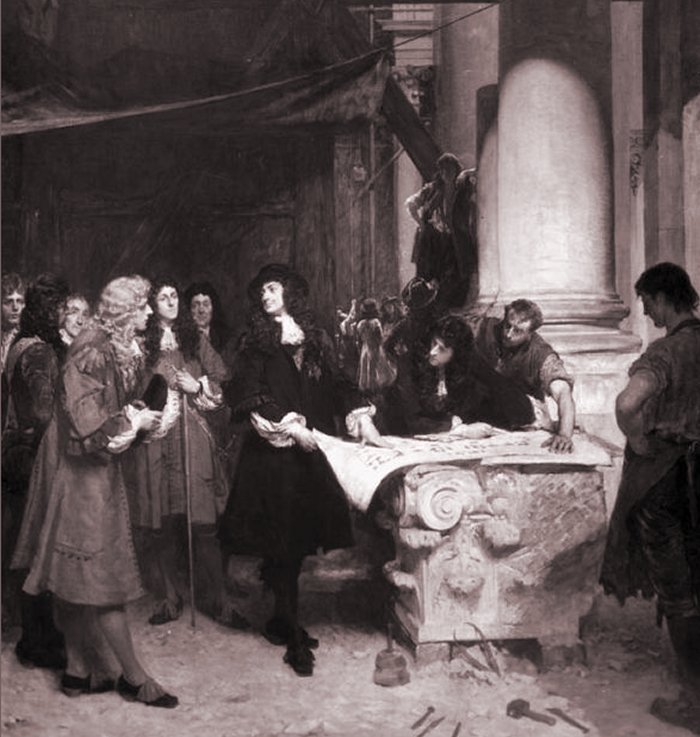Sir Christopher Wren – Genius Mind Of Most Influential British Architect Of All Time
A. Sutherland - AncientPages.com - Christopher Wren (1632-1723) was a man of considerable scientific abilities. He was regarded as the most influential British architect of all time.
Wren was born in 1632, in East Knoyle, Wiltshire, England. He showed an early talent for mathematics and enjoyed inventing things. At the age of 13, he invented an astronomical instrument, a pneumatic engine and an instrument for writing in the dark.

He dominated English architecture for 50 years. His most impressive work is St. Paul's Cathedral, London.
While at Oxford, he had plans for an instrument to measure angles, a “weather wheel”, a weather clock, an instrument to write double, a surveying instrument, and a new engine to raise water.
He developed a micrometer, attached telescopic sights to telescopes and developed a double-hinged telescope for measuring angles.
In 1657, Wren was appointed professor of astronomy at Gresham College in London and four years later, professor of astronomy at Oxford.
He focused on astronomy, physics, and anatomy. He experimented with submarine design, road paving, and design of telescopes and was the greatest English architect of his time.

At Oxford in the spring of 1666, he made his first design for a dome for St. Paul’s. It was accepted in principle on August 27, 1666. One week later, however, London was on fire. The Great Fire of London reduced two-thirds of the City to a smoking desert and old St. Paul’s Cathedral to a ruin.
At the age of 25, Wren was offered the Chair of Astronomy at Gresham College, London. Wren mapped the burned city of London and was given the responsibility for replacing the 87 parish churches demolished by the Great Fire of London in September 2, 1666.
Wren did not turn to architecture until 1663, when he designed the Pembroke College Chapel at Cambridge University.
Between 1670 and 1686 he designed 51 new churches including St. Paul's Cathedral, the largest cathedral in England, which is Wren's masterpiece. He also prepared designs of many other secular buildings. They constitute a major part of the vast amount of work done by him and are known as the City Churches.
Wren was a founder of the Royal Society (president 1680-82), and his scientific work was highly regarded by Sir Isaac Newton and Blaise Pascal. He was knighted in 1673.
Among his inventions, there are also: a machine to plant grain and a hothouse to grow tropical plants, a way of disinfecting sick rooms. He devoted his time to experiments with road paving and submarine design.
Wren was sixty-six years old when he finished St. Paul's. Other buildings designed by Wren included the Royal Exchange, College of Physicians, the Royal Naval College, Custom House and the Drury Lane Theatre. Chelsea Hospital. In 1682, Wren designed a Royal Hospital for soldiers at Chelsea.
When Christopher Wren died in 1723 at the age of 90, he became the first person to be buried in St. Paul's Cathedral. His tomb bears a simple inscription:
"Reader, if you seek his monument, look about you."
Written by – A. Sutherland - AncientPages.com Senior Staff Writer
Copyright © AncientPages.com All rights reserved. This material may not be published, broadcast, rewritten or redistributed in whole or part without the express written permission of AncientPages.com
Expand for referencesMore From Ancient Pages
-
 Previously Unknown Early Christian Church Unearthed In Ancient City Of Artaxata
Archaeology | Oct 18, 2024
Previously Unknown Early Christian Church Unearthed In Ancient City Of Artaxata
Archaeology | Oct 18, 2024 -
 Rare Viking Boat Burial At Kiloran Bay In Colonsay, Scotland Remains A Fascinating Find
Featured Stories | Mar 6, 2023
Rare Viking Boat Burial At Kiloran Bay In Colonsay, Scotland Remains A Fascinating Find
Featured Stories | Mar 6, 2023 -
 Arimaspians: Mysterious Mighty Warriors With One-Eye
Featured Stories | Mar 9, 2021
Arimaspians: Mysterious Mighty Warriors With One-Eye
Featured Stories | Mar 9, 2021 -
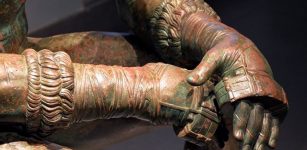 Boxer At Rest – Rare Sculpture And Masterpiece Of Hellenistic Bronze Art
Artifacts | May 21, 2021
Boxer At Rest – Rare Sculpture And Masterpiece Of Hellenistic Bronze Art
Artifacts | May 21, 2021 -
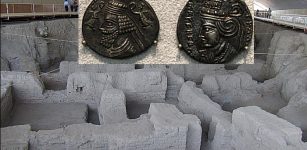 Mysterious Medes: Was It An Ancient City Of Ecbatana?
Archaeology | Jul 3, 2020
Mysterious Medes: Was It An Ancient City Of Ecbatana?
Archaeology | Jul 3, 2020 -
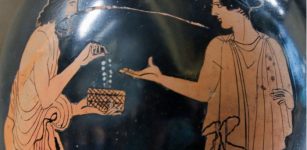 Necklace Of Harmony – Powerful Ill-Fated Piece Of Jewelry With Curse
Featured Stories | Jul 3, 2021
Necklace Of Harmony – Powerful Ill-Fated Piece Of Jewelry With Curse
Featured Stories | Jul 3, 2021 -
 Ambition, Greed And Death: The Roman Roots Of ‘Game Of Thrones’
Featured Stories | Jul 2, 2019
Ambition, Greed And Death: The Roman Roots Of ‘Game Of Thrones’
Featured Stories | Jul 2, 2019 -
 God Of The Gallows And How Odin Hanged Himself From Yggdrasil To Know Secrets Of Runes
Featured Stories | May 7, 2018
God Of The Gallows And How Odin Hanged Himself From Yggdrasil To Know Secrets Of Runes
Featured Stories | May 7, 2018 -
 Unique Bronze Age Fortress Discovered In Galway, Ireland
Archaeology | Jun 25, 2022
Unique Bronze Age Fortress Discovered In Galway, Ireland
Archaeology | Jun 25, 2022 -
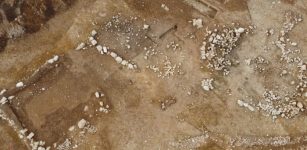 Bronze Age Roundhouses And Roman-Era Settlement Discovered In Newquay, Cornwall
Archaeology | Apr 11, 2023
Bronze Age Roundhouses And Roman-Era Settlement Discovered In Newquay, Cornwall
Archaeology | Apr 11, 2023 -
 We Need To Look Underwater To Understand Our Past – New Study
Archaeology | Apr 14, 2023
We Need To Look Underwater To Understand Our Past – New Study
Archaeology | Apr 14, 2023 -
 America’s Oldest City Caral Illegally Invaded And Archaeologist Threatened With Death
Archaeology | Jan 21, 2021
America’s Oldest City Caral Illegally Invaded And Archaeologist Threatened With Death
Archaeology | Jan 21, 2021 -
 2,000-Year-Old Rare Sarcophagus With Human Remains Discovered In Rock-Cut Cave In India
Archaeology | Jan 18, 2018
2,000-Year-Old Rare Sarcophagus With Human Remains Discovered In Rock-Cut Cave In India
Archaeology | Jan 18, 2018 -
 Evidence Of A Hybrid Population Of Neanderthals And Modern Humans Discovered At La Cotte De St Brelade
Archaeology | Feb 9, 2021
Evidence Of A Hybrid Population Of Neanderthals And Modern Humans Discovered At La Cotte De St Brelade
Archaeology | Feb 9, 2021 -
 Battle Of Abrittus: Roman Emperor Decius And His Troops Ambushed And Defeated By Invading Goths
Featured Stories | Jul 1, 2019
Battle Of Abrittus: Roman Emperor Decius And His Troops Ambushed And Defeated By Invading Goths
Featured Stories | Jul 1, 2019 -
 Tomography And Radiocarbon Dating Used To Examine Australian Aboriginal Knife
Archaeology | Jul 3, 2023
Tomography And Radiocarbon Dating Used To Examine Australian Aboriginal Knife
Archaeology | Jul 3, 2023 -
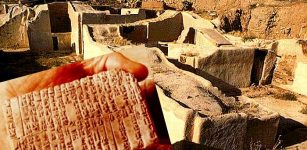 Mysterious Ancient City Of Ebla That Existed Thousand Years Before Biblical Kings David And Solomon
Ancient Mysteries | Aug 14, 2015
Mysterious Ancient City Of Ebla That Existed Thousand Years Before Biblical Kings David And Solomon
Ancient Mysteries | Aug 14, 2015 -
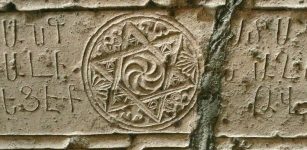 Ancient Iconic Armenian Wheel Of Eternity Depicted Inside A Six Pointed Star
Ancient Symbols | Feb 27, 2017
Ancient Iconic Armenian Wheel Of Eternity Depicted Inside A Six Pointed Star
Ancient Symbols | Feb 27, 2017 -
 Real-Life Excalibur Found Underwater In Bosnia – Medieval Sword In Stone Pulled Out
Archaeology | Oct 31, 2019
Real-Life Excalibur Found Underwater In Bosnia – Medieval Sword In Stone Pulled Out
Archaeology | Oct 31, 2019 -
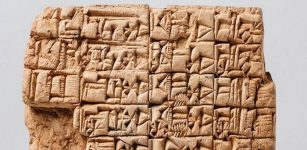 New AI Technique Will Help To Decode Long Lost Languages Of Ancient World
News | Oct 21, 2020
New AI Technique Will Help To Decode Long Lost Languages Of Ancient World
News | Oct 21, 2020

